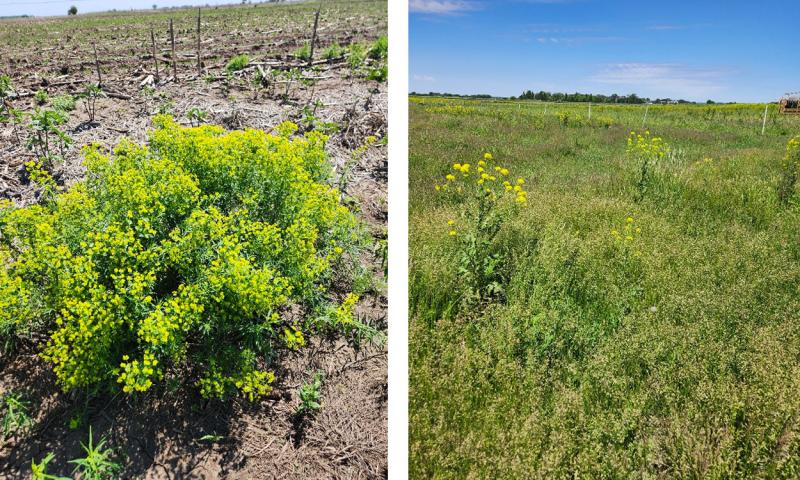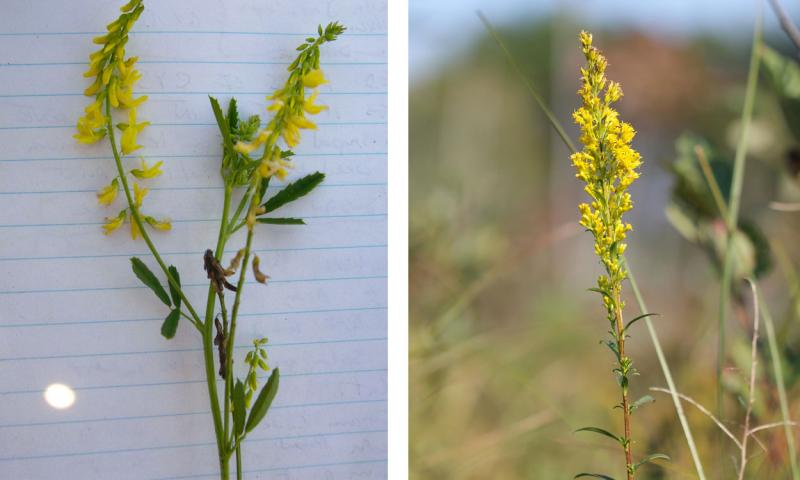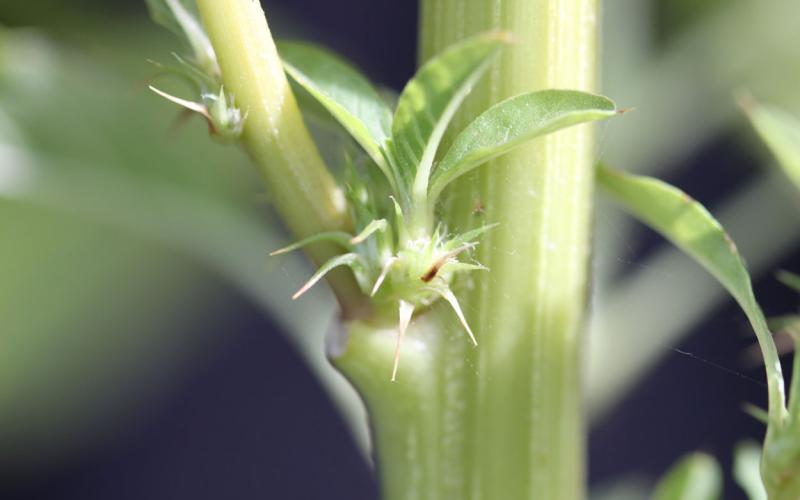
Written collaboratively by Eric Jones, Philip Rozeboom, Jill Alms, and David Vos.
Across South Dakota, yellow flowers are appearing all over the landscape. First thoughts when seeing these yellow flowers in pastures/rangeland and in roadsides might be: “That is leafy spurge!”. Leafy spurge is a statewide noxious weed that can be difficult to manage. However, are the yellow flowers leafy spurge or another species?
Weed Identification
In some cases, hedge mustard can be easily confused for leafy spurge from a distance due to the yellow, showy flowers (Figure 1). However, upon further investigation, it is evident that the flowers (Figure 2) and leaves (Figure 3) are quite different between the two species.
Flowers

Leaves

Leafy Spurge: Leafy spurge has large, yellow bracts (modified leaf surrounding the flower) and long, thin leaves. When leaves are removed from the plant, a white, milky sap is exudated from the stem. Leafy spurge spreads by rhizomes (underground stems) and seed. Therefore, patches of leafy spurge could be a singular plant.
Hedge Mustard: Hedge mustard has small clusters of yellow flowers and underneath the flowers are siliques (slender seed pods). The leaves are deeply lobed and covered in small, dense hairs. Hedge mustard reproduces by seed; therefore, the patches of these plants are all individual plants.
Similar Plants: While hedge mustard is a common plant that can be confused with leafy spurge at a distance, other plants can be confused with hedge mustard and leafy spurge. Other species could include sweet clover or goldenrod (Figure 4).

Management Tactics
While all these plants may need to be managed in a pasture/rangeland setting, proper identification is important as different tactics will be effective on the different species. Refer to the latest SDSU Extension Noxious Weed Control and Weed Control: Pasture and Range guides for selecting effective herbicides. While herbicides are effective, these are not the only tactics that can be utilized to manage leafy spurge and other weeds. Mowing, grazing, rotational grazing, and hand weeding are all viable options to manage these weeds. Additionally, the leafy spurge beetle manages leafy spurge by feeding on the plant. While, not as effective when used alone, the leafy spurge beetles are a great complementary tactic; especially in areas that are not easily accessible.

